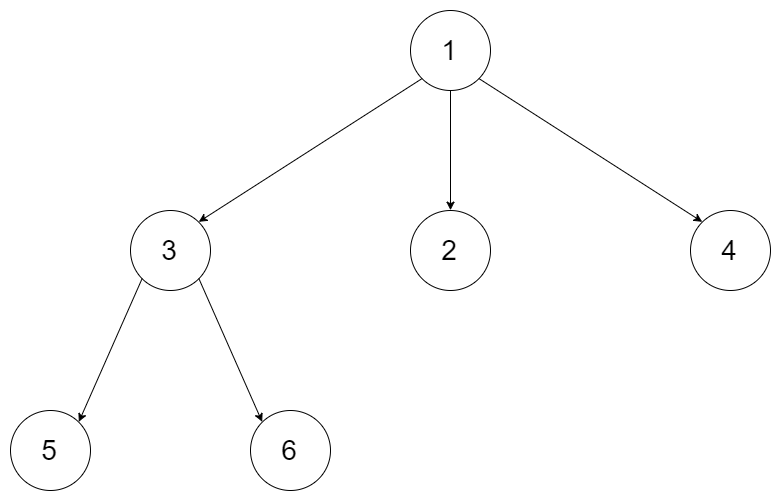Serialize and Deserialize N-ary Tree
Serialization is the process of converting a data structure or object into a sequence of bits so that it can be stored in a file or memory buffer, or transmitted across a network connection link to be reconstructed later in the same or another computer environment.
Design an algorithm to serialize and deserialize an N-ary tree. An N-ary tree is a rooted tree in which each node has no more than N children. There is no restriction on how your serialization/deserialization algorithm should work. You just need to ensure that an N-ary tree can be serialized to a string and this string can be deserialized to the original tree structure.
For example, you may serialize the following 3-ary tree

as [1 [3[5 6] 2 4]]. You do not necessarily need to follow this format, so please be creative and come up with different approaches yourself.
Note:
Nis in the range of[1, 1000]- Do not use class member/global/static variables to store states. Your serialize and deserialize algorithms should be stateless.
分析:下面这种方法
1 /* 2 // Definition for a Node. 3 class Node { 4 public int val; 5 public List<Node> children; 6 7 public Node() {} 8 9 public Node(int _val,List<Node> _children) { 10 val = _val; 11 children = _children; 12 } 13 }; 14 */ 15 class Codec { 16 17 // Encodes a tree to a single string. 18 public String serialize(Node root) { 19 if (root == null) return ""; 20 21 Queue<Node> que = new LinkedList<>(); 22 StringBuilder sb = new StringBuilder(); 23 sb.append(Integer.toString(root.val)).append(",#,"); 24 que.add(root); 25 26 while (!que.isEmpty()) { 27 Node node = que.poll(); 28 for (Node n : node.children) { 29 sb.append(Integer.toString(n.val)).append(","); 30 que.add(n); 31 } 32 sb.append("#,"); 33 } 34 35 return sb.toString(); 36 } 37 38 // Decodes your encoded data to tree. 39 public Node deserialize(String data) { 40 if (data.length() == 0) return null; 41 String[] s = data.split(","); 42 43 Queue<Node> que = new LinkedList<>(); 44 Node root = new Node(Integer.parseInt(s[0]), new ArrayList<Node>()); 45 que.add(root); 46 int i = 1; 47 48 while (!que.isEmpty()) { 49 Node node = que.poll(); 50 i++; 51 while (!s[i].equals("#")) { 52 Node c = new Node(Integer.parseInt(s[i]), new ArrayList<>()); 53 node.children.add(c); 54 que.add(c); 55 i++; 56 } 57 } 58 59 return root; 60 } 61 } 62 63 // Your Codec object will be instantiated and called as such: 64 // Codec codec = new Codec(); 65 // codec.deserialize(codec.serialize(root));





